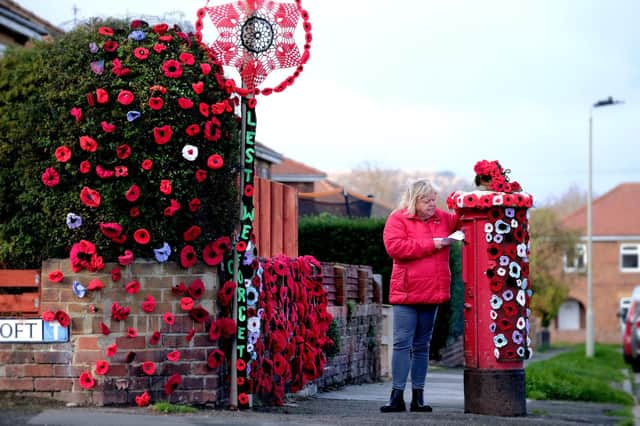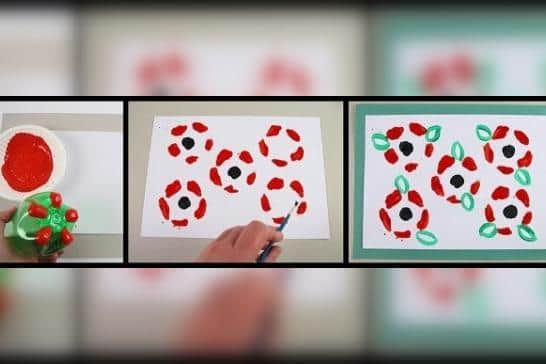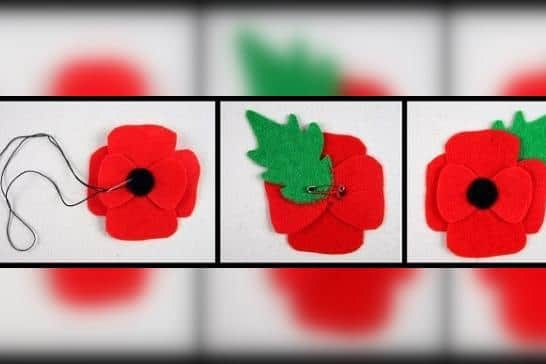This is how you can help your young ones understand and mark Remembrance Day


But former primary school teacher Becky Cranham, of education resource experts PlanBee says it all depends how you do it.
I believe that by helping primary school-aged children to understand why the nation comes to a halt at 11am to remember the war dead – and victims of terrorism, too – we can safeguard its future.
Advertisement
Hide AdAdvertisement
Hide AdWhy not try these simple activities at home to help your youngster understand what we’re remembering on Remembrance Day in an age-appropriate way?


Start by asking your youngster if they have ever done anything they didn’t want to do but that they knew they had to do. Discuss this for a while.
Explain that more than 100 years ago, a war began that was the biggest the world had ever seen.
Millions of soldiers had to go and fight for their country to make sure that their country and their families were safe. Many, many of these soldiers died. It is these soldiers we remember on Remembrance Day, as well as soldiers from other wars, such as World War Two, the Falklands and Iraq.
Advertisement
Hide AdAdvertisement
Hide AdMost soldiers didn’t want to go to war, but they did so because they wanted to fight for what they believed was right. This is called a sacrifice. We remember them to say thank you for what they did.


Make sure your child understands that it wasn’t just trained soldiers who went to war, but ordinary men: brothers, sons and fathers, and also remind them that Remembrance Sunday also commemorates civilians who died, too.
Poppy craft
Provide your child with an empty plastic bottle. They then dip the bottom of the bottle into the paint and print it onto a piece of paper. Create a poppy picture, or alternatively try putting the poppies in a circle to create a poppy wreath. Children can paint the black centre of each poppy, as well as the green leaves.
Slightly older children can cut out four or five petal shapes in red felt. Arrange the petals into a poppy shape and pin together. Stick together in the centre with black embroidery thread make the centre of the poppy. Cut out two pieces of green felt in leaf shapes and sew to the back of the poppy. They can then sew or attach a safety pin to the back to create a poppy brooch.
Advertisement
Hide AdAdvertisement
Hide AdFrame their handiwork with black paper or card and hang them in the window to create stained-glass poppy scenes.
Raise Money
One of the most important aspects of Remembrance Day is raising money for charities who support soldiers, veterans and their families, such as the British Legion which, typically, raises around £50 million a year through their poppy campaign.
Why not hold a bake sale or do a sponsored activity to contribute to this important cause?
Visit your local war memorial
Most towns and cities have a war memorial to commemorate those from the local area who have lost their lives in battle. Pay a visit to yours and read the inscriptions. Knowing that people from the area in which they live gave their lives in battle will make the concept of Remembrance Day more ‘real’.
Make Anzac Biscuits
Advertisement
Hide AdAdvertisement
Hide AdRemembrance Day isn’t just commemorated in the UK. Countries such as Canada, Australia, France, Belgium and the Cayman Islands also dedicate a national day to remember those who fought for their countries.
In Australia and New Zealand, ANZAC (Australian and New Zealand Army Corps) biscuits are traditionally baked and eaten on Remembrance Day. These biscuits were sent by women at home to soldiers who were fighting overseas during World War One. This was because the biscuits did not go stale quickly. Today, these biscuits are eaten as an act of remembrance.
Anzac Biscuits recipe: www.bbcgoodfood.com/recipes/anzac-biscuits
For more great Remembrance Day resources, click here.https://planbee.com/collections/remembrance-day